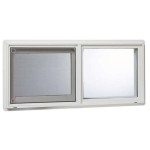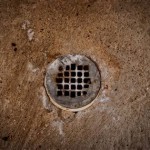Essential Aspects of Selecting the Right Pump for a Bathroom in a Basement
Installing a bathroom in a basement requires careful consideration of several factors, and one of the most crucial is selecting the right pump. A suitable pump ensures efficient drainage of wastewater, preventing flooding and potential damage to your basement. Here's a comprehensive guide to help you understand the essential aspects of choosing the right pump for your bathroom in a basement:
1. Pump Type
There are two main types of pumps for basement bathrooms: submersible pumps and pedestal pumps. Submersible pumps are placed inside the sump basin and operate underwater, while pedestal pumps are located outside the basin and connected to it by a discharge pipe. Submersible pumps are generally more powerful and can handle higher volumes of wastewater, making them ideal for basements with limited space or higher water levels. Pedestal pumps are more affordable and easier to access for maintenance, but they may not be suitable for basements with deep sump basins.
2. Pumping Capacity
The pumping capacity of a pump is measured in gallons per hour (GPH) and indicates the amount of wastewater it can remove. The appropriate pumping capacity for your bathroom will depend on several factors, including the size of your bathroom, the number of fixtures, and the expected water flow. A professional plumber can assess your specific needs and recommend the pump with the right capacity.
3. Head Height
Head height refers to the vertical distance the pump needs to lift the wastewater to discharge it into the drain line. It is crucial to consider the elevation difference between the sump basin and the discharge point when selecting a pump. A pump with insufficient head height will not be able to discharge the wastewater effectively, potentially leading to backups and flooding.
4. Discharge Size
The discharge size of the pump refers to the diameter of the pipe it will connect to for discharge. It is important to ensure that the discharge pipe is compatible with the pump's outlet size to avoid any leaks or restrictions. Most pumps have a discharge size of 1-1/2 inches or 2 inches, but larger sizes may be required for heavy-duty applications.
5. Materials of Construction
The materials used to construct the pump are crucial for its durability and longevity. Pumps are typically made of cast iron, plastic, or stainless steel. Cast iron pumps are durable and corrosion-resistant, but they are also heavier and more expensive. Plastic pumps are lightweight and affordable, but they may not be as durable as cast iron. Stainless steel pumps offer a balance of durability and affordability.
6. Power Source
Pumps can be powered by electricity or battery. Electric pumps are the most common and reliable option, but they require a dedicated power outlet. Battery-powered pumps are portable and can be used in the event of a power outage, but they have a limited runtime and may require frequent battery replacements.
7. Additional Features
Some pumps offer additional features that may enhance their functionality and convenience. These features may include a built-in check valve to prevent backflow, an alarm to alert you to potential problems, or an automatic switch to turn the pump on and off as needed. Consider the specific needs of your bathroom and choose a pump that offers the most suitable additional features.
By considering these essential aspects, you can select the right pump for your bathroom in a basement and ensure efficient drainage, prevent flooding, and protect your basement from potential damage. It is always advisable to consult with a professional plumber for a thorough assessment and recommendations based on your specific requirements.

All About Basement Bathroom Systems Riverbend Home

Basement Toilet Pump Plumbing Inspections Internachi Forum

Everbilt 1 2 Hp Upflush System Sewage Ejector Pump Kit Sw07501tc The Home

Sewage Ejector Pump Vs Upflush Toilet

How To Add A Bathroom Basement The Easy Way Diy Family Handyman

Basement Sump Pumps Zoeller Pump Company

How To Add A Bathroom Basement The Easy Way Diy Family Handyman

Basement Plumbing For Ejector Pump Up To Main Sewage Line

My Flo700 Dreamsani Macerating Upflush Toilet Basement With 700w Pump

Basement Bathroom Ejector Pump System Do I Need One Youtube








